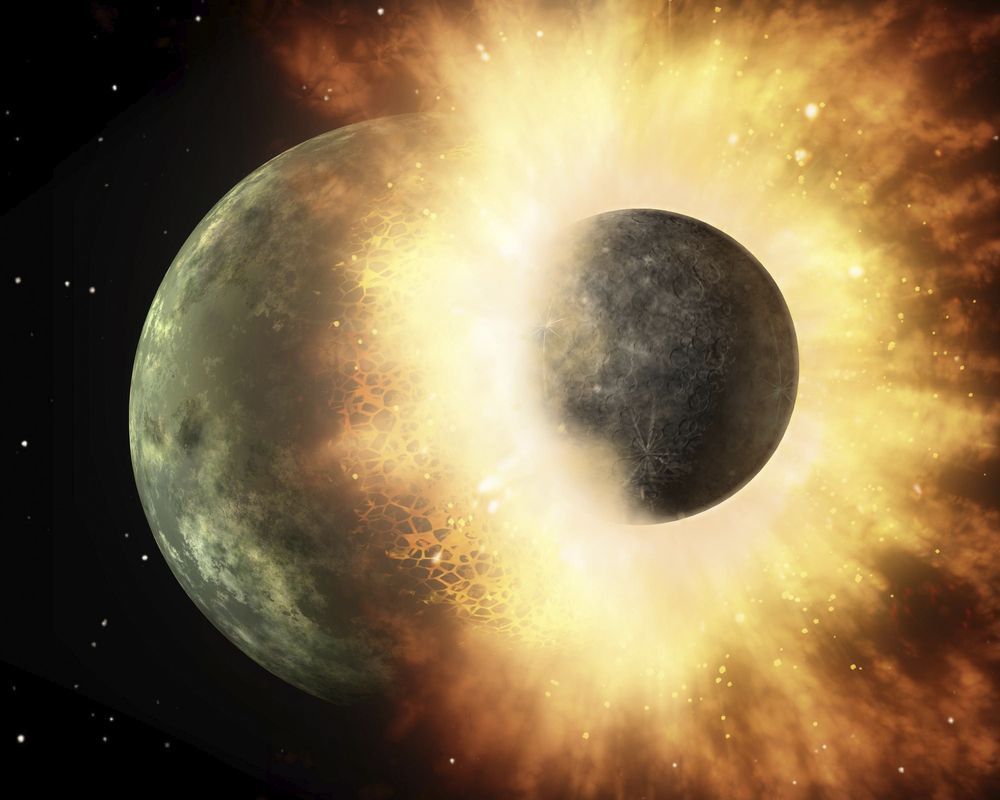From remote measurements of the Moon’s mass and radius, researchers also know its density is anomalously low, indicating it lacks iron. While about 30 percent of Earth’s mass is trapped in its iron-rich core, the Moon’s core accounts for only a few percent of its total mass. Despite this substantial difference in iron, Apollo samples later revealed that mantle rocks from the Moon and Earth have remarkably similar concentrations of oxygen.
And because these lunar and terrestrial rocks differ significantly from meteorites originating from Mars or the asteroid belt, it shows the Moon and Earth’s mantle share a past connection. Additionally, compared with Earth, lunar rocks are more depleted in so-called volatile elements — those that vaporize easily upon heating — which hints that the Moon formed at high temperatures.
Finally, researchers know that tidal interactions forced the Moon to spiral outward over time, which in turn caused Earth to spin more slowly. This implies the Moon formed much closer to Earth than it is now. Precise measurements of the Moon’s position using surface reflectors placed during the Apollo program subsequently confirmed this, verifying the Moon’s orbit expands by about 1.5 inches (3.8 centimeters) each year.
